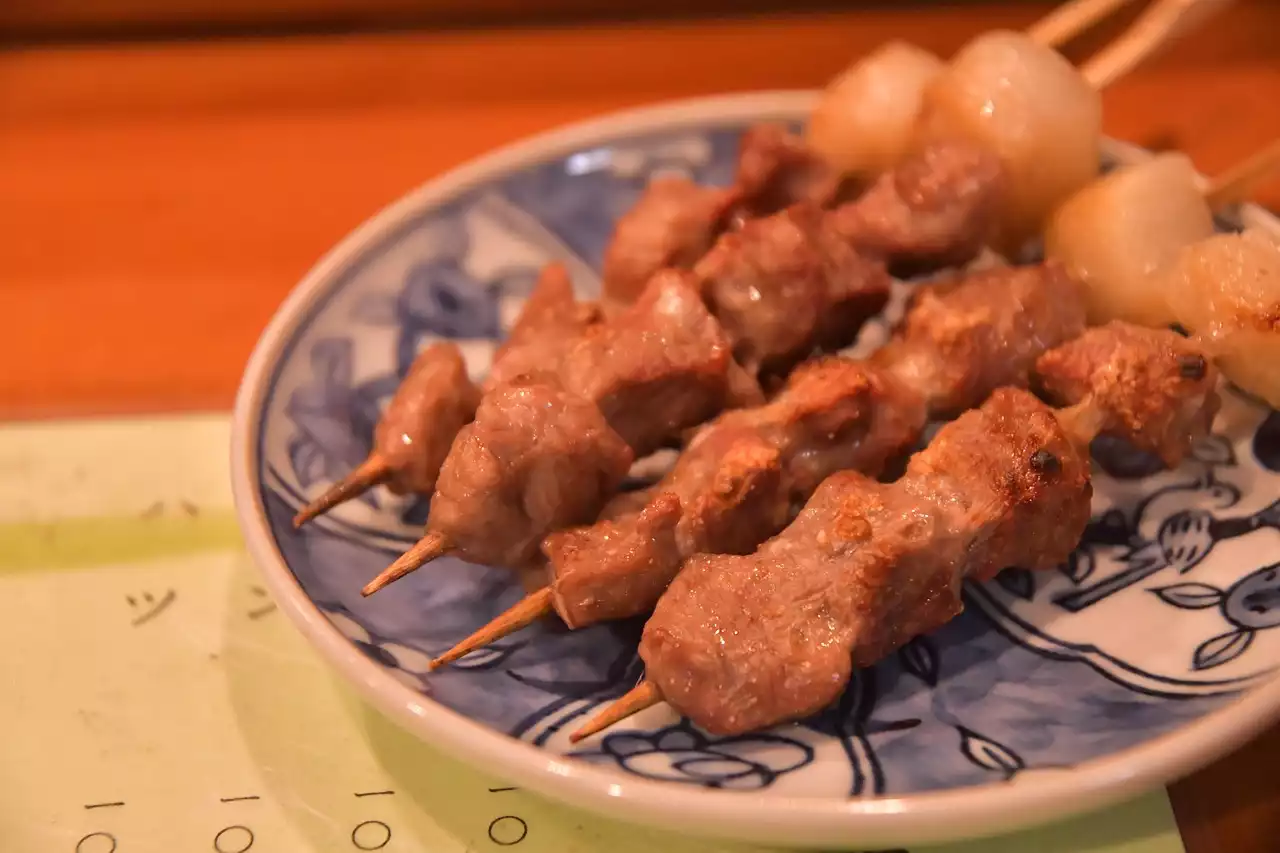Japanese cuisine is renowned for its variety of flavors and textures, and grilling is an essential part of this cuisine. From yakitori to okonomiyaki, Japanese grilling techniques are unique and varied, offering a range of delicious dishes that are sure to impress. In this article, we'll explore the different styles of Japanese grilling and provide you with some tips and recipes to help you master the art of Japanese grilling.
Yakitori: The Art of Grilling Chicken Skewers
Yakitori, which translates to "grilled chicken," is one of the most popular types of Japanese grilling. This dish consists of small pieces of chicken meat that are skewered and grilled over hot coals. Yakitori has a long history in Japan, with some sources dating it back to the Edo period (1603-1868).
To make yakitori, chefs use a variety of chicken cuts, including the thighs, wings, and breast. Thigh meat is the most commonly used, as it is more flavorful and tender than other cuts. The meat is seasoned with salt or a sweet and savory sauce called tare, which is made with soy sauce, sake, mirin, and sugar.
Yakitori is traditionally grilled over binchotan charcoal, which produces a high heat and minimal smoke, resulting in a crispy exterior and juicy interior. Chefs often use a special yakitori grill, which is a long, narrow charcoal grill with multiple levels of grates, allowing them to cook different skewers at the same time.
Some popular types of yakitori include negima, which features chicken thigh and leek, tsukune, which are chicken meatballs, and momo, which are chicken thigh skewers. Yakitori is typically served with a sprinkle of salt or a side of tare sauce, along with a cold beer or sake.
Robatayaki: Charcoal Grilled Meat and Seafood
Robatayaki is a type of Japanese grilling that originated in Hokkaido, the northernmost island of Japan. This style of grilling involves cooking meat, seafood, and vegetables over hot charcoal on a long, narrow grill called a robata.
The word robatayaki translates to "fireside cooking," and the concept is based on the traditional Japanese hearth, where families would gather around a fire to cook their meals.
To make robatayaki, chefs use a variety of ingredients, including beef, pork, chicken, shrimp, and squid. These ingredients are often marinated in soy sauce, mirin, and sake before being grilled over hot coals.
Some popular types of robatayaki include negima (chicken and leek skewers), shishamo (smelt fish), and yaki-onigiri (grilled rice balls). Robatayaki is typically served with a side of soy sauce or ponzu sauce, along with a cold beer or sake.
[
Yakiniku: Grilling Japanese-style Barbecue
Yakiniku, which translates to "grilled meat," is a Japanese-style barbecue that originated in Korea. This style of grilling involves cooking thin slices of meat and vegetables on a table-top grill.
Yakiniku became popular in Japan after World War II, when the country was introduced to Korean cuisine. Since then, it has become a staple of Japanese cuisine and is enjoyed in yakiniku restaurants throughout the country.
To make yakiniku, chefs use a variety of meats, including beef, pork, and chicken, as well as vegetables such as onions, mushrooms, and peppers. These ingredients are sliced thinly and marinated in a mixture of soy sauce, sake, and sugar before being grilled over a tabletop charcoal or gas grill.
Some popular types of yakiniku include kalbi (beef short ribs), harami (skirt steak), and tan (beef tongue). Yakiniku is typically served with a side of dipping sauce, such as tare or yuzu kosho (a spicy citrus sauce), along with rice and kimchi.
Okonomiyaki: Japanese-style Pancakes on the Grill
Okonomiyaki is a savory pancake that originated in Osaka, Japan. The name okonomiyaki means "grilled as you like it," as it is a customizable dish that can be made with a variety of ingredients.
To make okonomiyaki, chefs start with a batter made of flour, eggs, and water or dashi (a fish broth). The batter is then mixed with shredded cabbage, diced meat or seafood, and other ingredients such as green onions or grated yam.
The mixture is then poured onto a hot griddle and cooked until golden brown. Once cooked, the pancake is topped with okonomiyaki sauce (similar to Worcestershire sauce), mayonnaise, and bonito flakes.
There are two main styles of okonomiyaki: Hiroshima-style and Kansai-style. Hiroshima-style features layers of ingredients, including noodles, while Kansai-style mixes all the ingredients together. Both styles are delicious and can be customized to suit your tastes.
Japanese Grilling Techniques and Tools
Japanese grilling techniques are unique and require specific tools to achieve the desired results. One of the most important tools is the charcoal grill, which is often used to grill yakitori and robatayaki.
Binchotan charcoal is the preferred choice for Japanese grilling, as it burns at a high temperature and produces little smoke. Yakitori grills are often long and narrow, allowing chefs to cook multiple skewers at once.
Yakiniku is often cooked on a tabletop grill, either charcoal or gas, which allows diners to cook their own meat and vegetables to their liking.
In addition to the grill, other essential tools include long metal skewers for yakitori, tongs for flipping meat and vegetables, and a basting brush for applying sauce.
Conclusion
Japanese grilling is a unique and delicious way to enjoy meat, seafood, and vegetables. From yakitori to okonomiyaki, there are a variety of dishes to explore and enjoy.
To master Japanese-style grilling, it's important to understand the techniques and tools used by Japanese chefs. Whether you're using a charcoal grill or a tabletop grill, the right tools and ingredients can help you create delicious and authentic Japanese dishes.
So why not try your hand at Japanese grilling? With a little practice and some patience, you can impress your friends and family with your own Japanese-style dishes.









